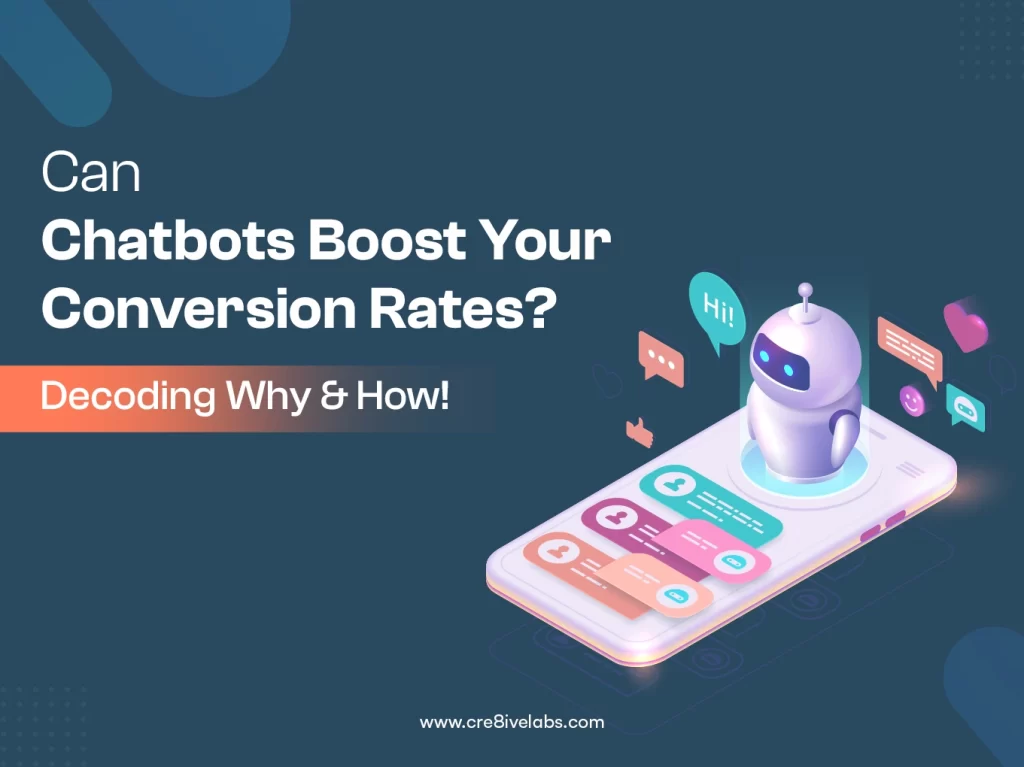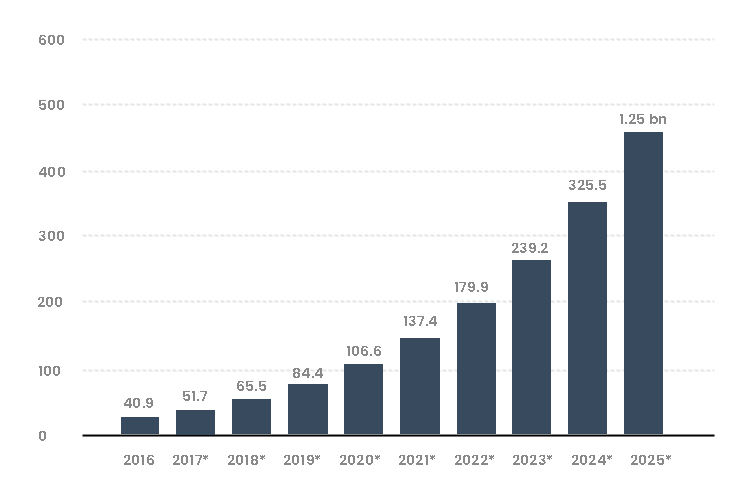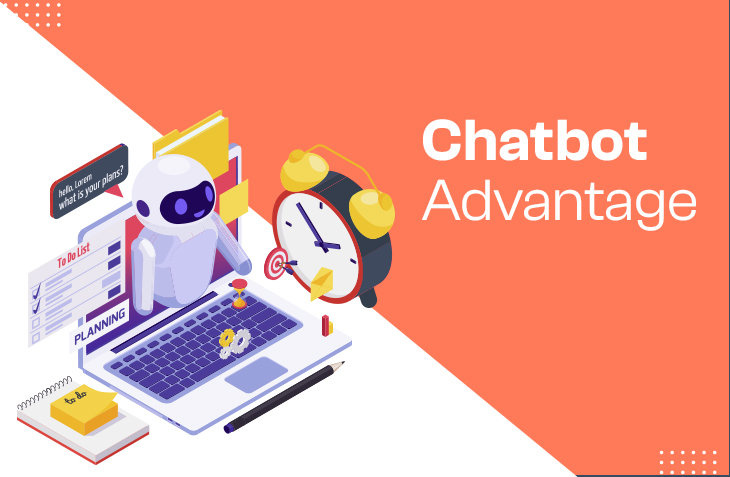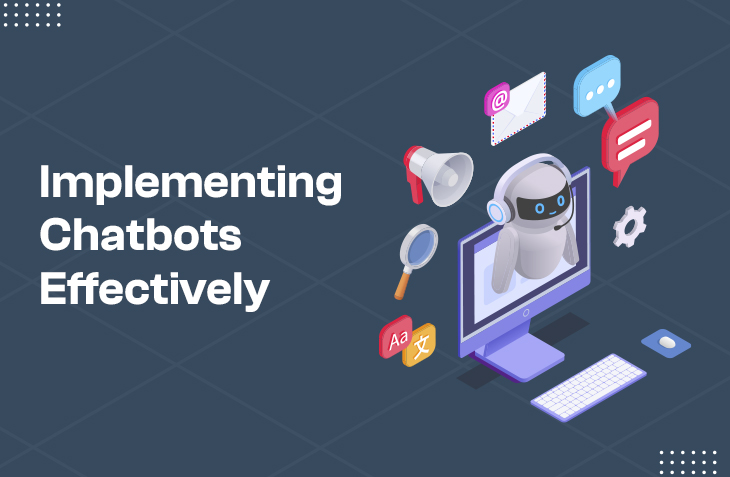Can Chatbots Boost Your Conversion Rates- Decoding Why and How

Can Chatbot Optimization Boost Your Conversion Rates? Decoding Why and How!
Imagine visiting an online store where you’re confronted with a myriad of questions and confusion. Frustrating, isn’t it?
Now, picture a helpful assistant popping up on the screen, ready to answer your queries. That’s the power of AI chatbot optimization.
These intelligent virtual assistants revolutionize customer interactions and increase conversion rates.
Let’s dive into the numbers for a moment. According to industry experts at Gartner, an astounding 25% of customer service operations were projected to adopt chatbots by 2020.
That’s right, a quarter of all customer interactions were set to be handled by these intelligent bots. Why such a rapid adoption? It’s simple: businesses are investing heavily in improving the customer experience.
According to Dharmesh Shah, HubSpot founder and CTO
“What 1997 was to Internet and browsers, 2017 is to bots.”
Now that we have the numbers and quotes to back it up, let’s take a closer look at why and how chatbot optimization can boost conversions.
Why Chatbot Optimization is Gaining Popularity
First off, chatbots offer 24/7 availability, ensuring that customers can get the help they need, no matter the time or location. And it’s not just about being available; chatbots deliver instant responses, eliminating the agony of waiting for human support.
With AI algorithms at their core, you can work on enhancing chatbot performance. Chatbots can provide personalized interactions that leave customers feeling understood and valued. Chatbots offer remarkable benefits, it’s no surprise that chatbots have become a game-changer for businesses.
In fact, a staggering 84% of organizations were anticipated to ramp up their investments in customer experience technology in 2017 alone, which will reach 1.25 billion by 2025.

Should you care
The answer is a resounding yes! With the ever-increasing expectations of customers for seamless and personalized interactions, chatbots provide a competitive edge by delivering efficient and convenient support.
Infact, according to Relay, 58% of companies in a B2B sector actively use chatbots.
Not only do they enhance customer satisfaction, but they also have the potential to boost your conversion rates. Through chatbots, you can streamline your customer service processes, improve response times, and create a more engaging experience for your audience. And now with AI, improving chatbot efficiency is easier than ever.
With the numbers in favor of chatbots, it’s clear that their integration will lead to tangible benefits for your business.
The Chatbot Advantage
Chatbots have revolutionized the way businesses engage with customers, delivering exceptional benefits that go beyond basic customer support. Let’s dive deeper into chatbot effectiveness and the advantages they can bring for your business.

Instant Support, Anytime
Chatbot is like having a round-the-clock assistant at your beck and call. It’s available around the clock to address customer queries and concerns. Just like a tireless employee, chatbots interact with customers, resolving issues in real-time.
Whether it’s the middle of the night or a busy holiday season, chatbots ensure that your customers never have to wait for assistance. And these are the best practices to ensure your website has amazing user experience.
So, if you run an e-commerce store and customers flood your website during a flash sale. You can effortlessly handle the increased demand and provide instant support to all customers, ensuring a seamless shopping experience.
Chatbot optimization will not only help you make a huge profit but leave a lasting impression on customers, forcing them to return in future.
Efficient Customer Interactions
Customers value personalized experiences. They want to feel heard and understood by brands. And chatbots excel in this aspect. You can work on boosting chatbot capabilities by leveraging AI algorithms to analyze customer data and provide tailored responses.
This allows a chatbot to offer personalized recommendations, product suggestions, or even exclusive offers.
Imagine engaging with the chatbot of your favorite streaming service. If it greets you by name and suggests movies or shows based on your previous viewing habits, wouldn’t it feel great?
This personalized approach not only enhances the customer experience but also encourages customer loyalty and will make you come back.
This is exactly what it will do for your business too. It will help you connect with your customers through personalization and ultimately boost conversions.
Cost-Effective and Scalable
Hiring and training a large customer support team is expensive, especially as the business grows. Chatbots offer a cost-effective solution by handling a significant portion of customer support tasks.
According to Juniper Research, the average cost of a chatbot interaction chatbot is approximately $0.50-0.70.
They reduce the workload on human agents, allowing them to focus on more complex issues that require human intervention.
Not only this, chatbots are highly scalable. So, as your business expands you can assign more work to chatbots without actually hiring more staff.
This scalability keeps your customer support efficient and cost-effective, regardless of your business’s growth trajectory.
Enhanced Customer Satisfaction
Modern customers expect instant gratification. They are impatient and they want immediate answers to their questions. Chatbots excel in providing quick responses, which in turn, boost their satisfaction.
By minimizing this wait time, increasing chatbot engagement, and resolving their issues promptly, chatbots make every customer feel valued.
So, when a customer has a question about product specifications, the chatbot instantly provides detailed information, clearing their doubts.
This instant response not only increases customer satisfaction but also helps drive conversions by reducing potential drop-offs due to unanswered queries.
Data Collection and Insights
Chatbots are invaluable as data collection tools, capturing valuable customer information to inform your business strategy. By analyzing customer interactions, chatbots provide insights into customer preferences, pain points, and emerging trends. These insights from the chatbot training and data collection help you make data-driven decisions and develop products aligning with customer needs.
Imagine running a beauty brand where a chatbot collects data on customers’ preferred beauty products, skincare concerns, and desired features. Wouldn’t it help you identify trends, launch targeted marketing campaigns, and even develop new products tailored to your customers’ preferences? These small decisions could be the ones stopping you from reaching your full potential.
Implementing Chatbots Effectively
To fully harness the power of chatbot optimization and maximize their impact on your business, it’s important to implement them effectively. Here are some key steps to consider in the process of chatbot integration with CRM systems:

1. Use AI-powered chatbots
Artificial intelligence (AI) is more accessible today. In fact, 8 out 10 businesses use AI-powered chatbots for customer service and support.
AI-powered chatbots are sophisticated. They can learn and improve on how to interact with your customers. Plus, you can program it to have more complex responses to varying situations and circumstances. AI is not just changing chatbots, it is huge in web apps too.
Nonetheless, this will still require extensive programming and training. But if you have good software, accomplishing this process is a breeze. You can program different scenarios and try personalizing chatbot interactions to be more effective and efficient.
2. Create a persona for your bot
One of the popular chatbot business ideas is to create a persona to represent your brand. Your chatbot serves as your mascot to encapsulate your business’ identity. This makes it easier for your customer to remember your brand. This simple step will humanize your bot in your customers’ eyes.
You can do this by putting a face and a name to your chatbot, allowing customers to see who they are interacting with. The psychology of this is almost similar to when you suddenly receive a message from a random person in your Messenger app.
You’ll feel skeptical or wary when you cannot see any profile photo in the chat bubble. Adding a photo or giving your chatbot a name is a way to remedy that.
3. Give bot some personality
To complete your bot’s character, you should also add some personality to it. After all, nobody enjoys talking to someone who speaks like a robot. Without personality, your chatbots might turn away your customers.
You can also add Multilingual chatbot solutions to appeal to international audiences and connect with people all over the world without the language barrier.
Show your bot’s personality through its language and tone. Program it to sound more conversational and casual instead of too formal and stiff (unless it matches your branding) so your bots can build rapport with customers faster. You can even add personalization by letting your bot address the customer by name.
4. Allow visual expressions
People love to use emojis, GIFs, and memes in their virtual interactions. A recent study shows that a post or message with emojis tends to have a 25% higher engagement rate than those without.
With that, consider programming your context-aware chatbots to respond with visual expressions like emojis, GIFs, and even memes. This helps them convey emotions and meanings while also keeping a friendly connection with your customers.
The appropriate visual cues will let the chatbot maintain personalization with each interaction. It will make your customers feel comfortable to the point of trusting it. This will also help build up your brand identity and boost conversions in the process.
5. Integrate with other software
You can enhance the customer experience with your chatbot optimization by integrating it with other software. Some examples are the different types of customer service software, helpdesk software, and ticketing system. This gives your bot access to various data, functions, and features to improve its interactions and responses to your customers.
Having a chatbot is not just helpful for your website. It’s also beneficial to have one for communication apps like WhatsApp, Facebook, and emails. Use Natural language processing for chatbots to make it stand out and more helpful to end customers. This makes your brand even more accessible to your customers in the process.
6. Leverage data and analytics
Leveraging data allows your chatbots to learn the patterns and behaviors of your customers. It gives them an idea of how your customers usually respond in certain situations, their demands, and their needs. In turn, it teaches your chatbots how best to communicate with them.
You can gather data by recording and analyzing past conversations between your chatbots and your customers. This way you can note FAQs, common issues, and your customers’ reactions to your chatbot’s analytics and insights.
The right data will help you come up with more scenarios for your chatbot’s programming. This will expand its potential reactions and reactions appropriate for varying situations.
This is exactly what Dave Waters said “In the future people’s best friend will be their personal chatbot. The chatbot will know everything about you because it will have access to your email, social media, and all the websites you visit. Whatever you ask the chatbot the response will be something that you agree with. “I’m talking to myself” will take on a whole different meaning with personalized chatbots.”
Conclusion
Chatbots offer businesses an opportunity to revolutionize customer interactions and drive conversion rates. With their availability, chatbot user experience, and cost-effectiveness, they have become a game-changer in the business world.
But this is just the beginning. As AI technology continues to advance, the possibilities for chatbot optimization are endless. Embracing the potential of chatbots is the key to staying at the forefront of this technological wave.
So, are you ready to embrace the revolution and explore the possibilities for your business? The choice is yours, and the rewards are waiting to be discovered.

Post a Comment